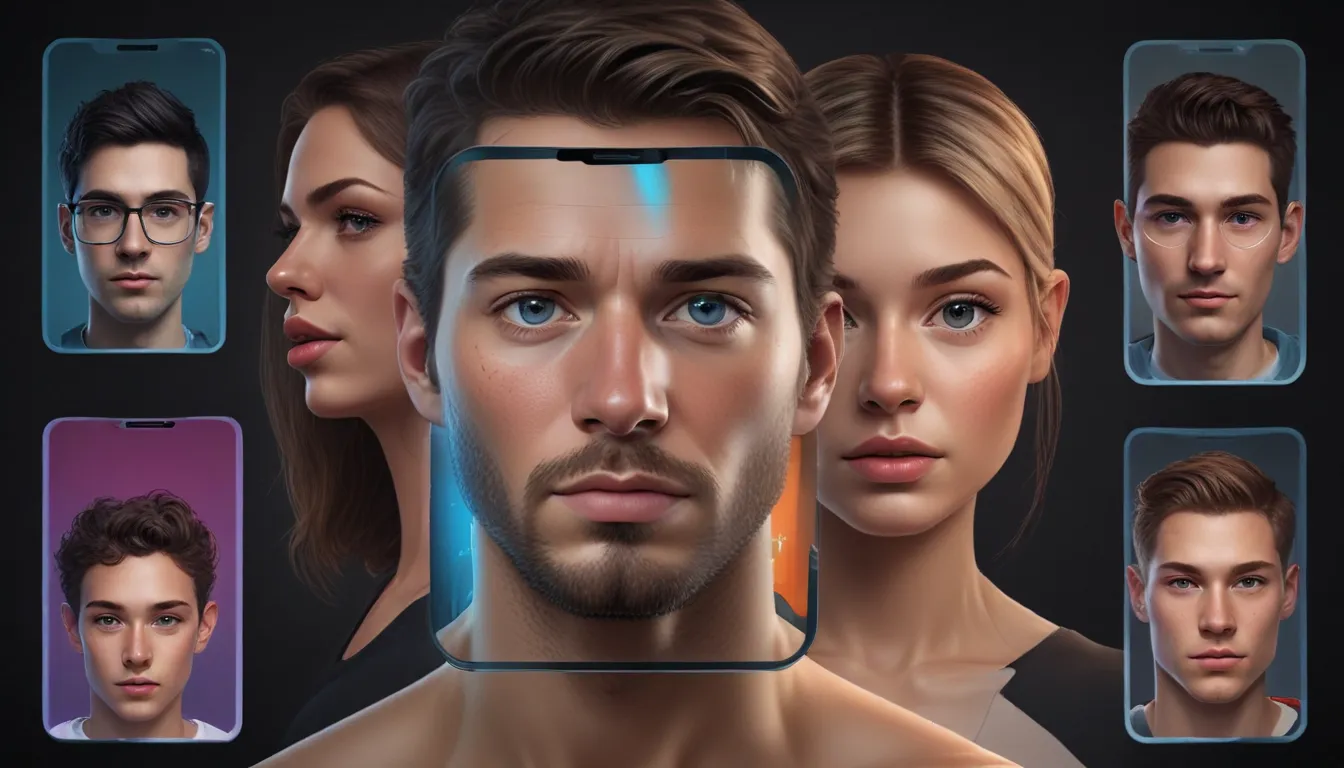A Note About Images: The images used in our articles are for illustration purposes only and may not exactly match the content. They are meant to engage readers, but the text should be relied upon for accurate information.
In today’s digital age, Face ID technology has emerged as a cutting-edge marvel of security and convenience, revolutionizing how we interact with our devices. Initially unveiled by Apple in 2017, this groundbreaking feature has transcended traditional password-based security measures, offering a seamless and intuitive way to unlock devices and safeguard sensitive information. However, beyond its user-friendly interface lies a world of intricacies and applications that often go unnoticed. From its inception to its role in enhancing security and privacy, Face ID encompasses a myriad of fascinating aspects worth exploring. Let’s delve into 20 captivating facts about Face ID, shedding light on its development, functionality, and impact on our daily digital experiences.
Unveiling the Wonders of Face ID
Face ID represents Apple’s innovative facial recognition technology, first introduced to the world with the iPhone X. This revolutionary technology enables users to unlock their devices, authorize payments, and access secure data with a simple glance. By utilizing a sophisticated combination of infrared cameras, dot projectors, and intricate algorithms, Face ID meticulously maps the user’s facial geometry with over 30,000 invisible dots, creating a detailed depth map that is highly resistant to replication through photos or masks.
- Face ID represents a significant leap forward in smartphone security, supplanting the Touch ID fingerprint scanner present in earlier models.
Safeguarding Your Data with Face ID
Ensuring stringent security measures is a top priority for Apple, especially when implementing new biometric authentication methods such as Face ID. Several layers of security have been integrated into the Face ID system to prevent unauthorized access to devices.
- Data collected by Face ID is encrypted and securely stored in the Secure Enclave, a specialized component of the device’s chip that bolsters security measures. 2. Face ID functionality is contingent upon the user’s eyes being open and directed towards the device, thwarting attempts to unlock the device when the user is asleep or unconscious. 3. Apple asserts that the likelihood of an unauthorized individual successfully unlocking a device using Face ID is approximately 1 in 1,000,000, a significant improvement over the 1 in 50,000 odds associated with Touch ID.
Evolution of Face ID Technology
Since its inception, Face ID has undergone continuous evolution to enhance its speed, accuracy, and performance across varying conditions and scenarios.
- Subsequent iterations of the iPhone have witnessed enhancements in the Face ID system, rendering it faster and more adept at recognizing faces from diverse angles and distances. 2. Amidst the global COVID-19 pandemic, Apple has refined Face ID to better accommodate users wearing masks, addressing an initial challenge faced by the technology.
Beyond Device Unlocking: The Versatility of Face ID
Face ID transcends its primary function of device unlocking, integrating seamlessly into various facets of the iOS ecosystem, thereby showcasing its versatility and convenience.
- Users can leverage Face ID to make secure purchases via Apple Pay, access protected applications, and autofill passwords in Safari, streamlining authentication processes. 2. Developers are granted access to the Face ID API, enabling them to incorporate facial recognition into their applications for seamless and secure logins.
Addressing Privacy Concerns Surrounding Face ID
The deployment of biometric technologies like Face ID inevitably raises privacy concerns among users. Apple has proactively implemented measures to safeguard user data and privacy.
- Face ID data, including facial recognition maps, remains localized and is not uploaded to Apple servers or backed up to iCloud. 2. The technology is designed to adapt to changes in a user’s appearance, such as facial hair variations or makeup, without compromising privacy or security.
Envisioning the Future of Face ID
As technology continues to advance, the potential for Face ID to redefine user-device interactions and infiltrate other facets of our digital landscape is boundless.
- Experts speculate that Face ID could offer more personalized app experiences, tailoring settings based on user identities. 2. There exists the possibility of integrating Face ID into an array of Apple products, including Macs, to ensure a seamless user experience across all devices. 3. The sophisticated technology underpinning Face ID could pave the way for enhanced augmented reality (AR) applications, leveraging the detailed spatial data it captures.
Navigating Challenges and Limitations of Face ID
Despite its formidable capabilities, Face ID encounters certain limitations and challenges, prompting Apple to address them through software updates and hardware enhancements.
- Face ID requires direct visibility of the user’s face, which may pose challenges under bright sunlight conditions or when the device is placed flat on a surface. 2. Some users have reported issues with Face ID’s recognition accuracy in specific scenarios, such as when wearing infrared-blocking sunglasses. 3. Concerns regarding accessibility have been raised for users with disabilities that may hinder their ability to effectively utilize Face ID.
Enhancing User Experience and Adoption with Face ID
The advent of Face ID heralded a landmark shift in user-device interactions, placing a premium on convenience and security.
- Many users extol the hands-free nature of Face ID, particularly in instances where their hands are wet or soiled, rendering fingerprint scanners impractical. 2. Despite initial skepticism, Face ID has garnered widespread adoption and commendation for its ease of use and reliability. 3. Studies indicate that Face ID has set a new benchmark for biometric security in the tech realm, influencing competitors to explore facial recognition technologies. 4. Face ID’s triumph underscores the importance of balancing innovation with user privacy and security, a delicate equilibrium Apple continues to navigate in its technological pursuits.
Embracing the Marvels of Face ID
Our exploration of the realm of Face ID has unveiled a tapestry of wonders, delineating its profound impact, sophistication, and the sheer brilliance underpinning this technology. Whether fortifying security measures or streamlining digital interactions, Face ID epitomizes human ingenuity and progress. More than a mere tool for unlocking devices, Face ID serves as a harbinger of a future brimming with technological advancements that promise to redefine our existence in ways beyond imagination. As we advance into the horizon, the prospects for Face ID to evolve and integrate further into our digital tapestry are limitless. It’s evident that Face ID transcends mere convenience, serving as a beacon illuminating the path to a future replete with security, efficiency, and technological excellence. Let us remain vigilant for what lies ahead, for the journey of Face ID’s evolution is far from over.
Persistently committed to delivering informative and engrossing content, our dedication to upholding the highest standards of accuracy and authenticity drives our pursuit of knowledge. Each tidbit of information on our platform is a testament to the diverse insights and contributions of real users like you, ensuring a tapestry of facts that excite and educate. Trust in our unwavering commitment to quality and accuracy as you embark on a journey of discovery and growth with us.
As you explore the landscape of Face ID and beyond, may you be inspired by the endless possibilities that technology unfurls, forging a future illuminated by innovation and progress.






